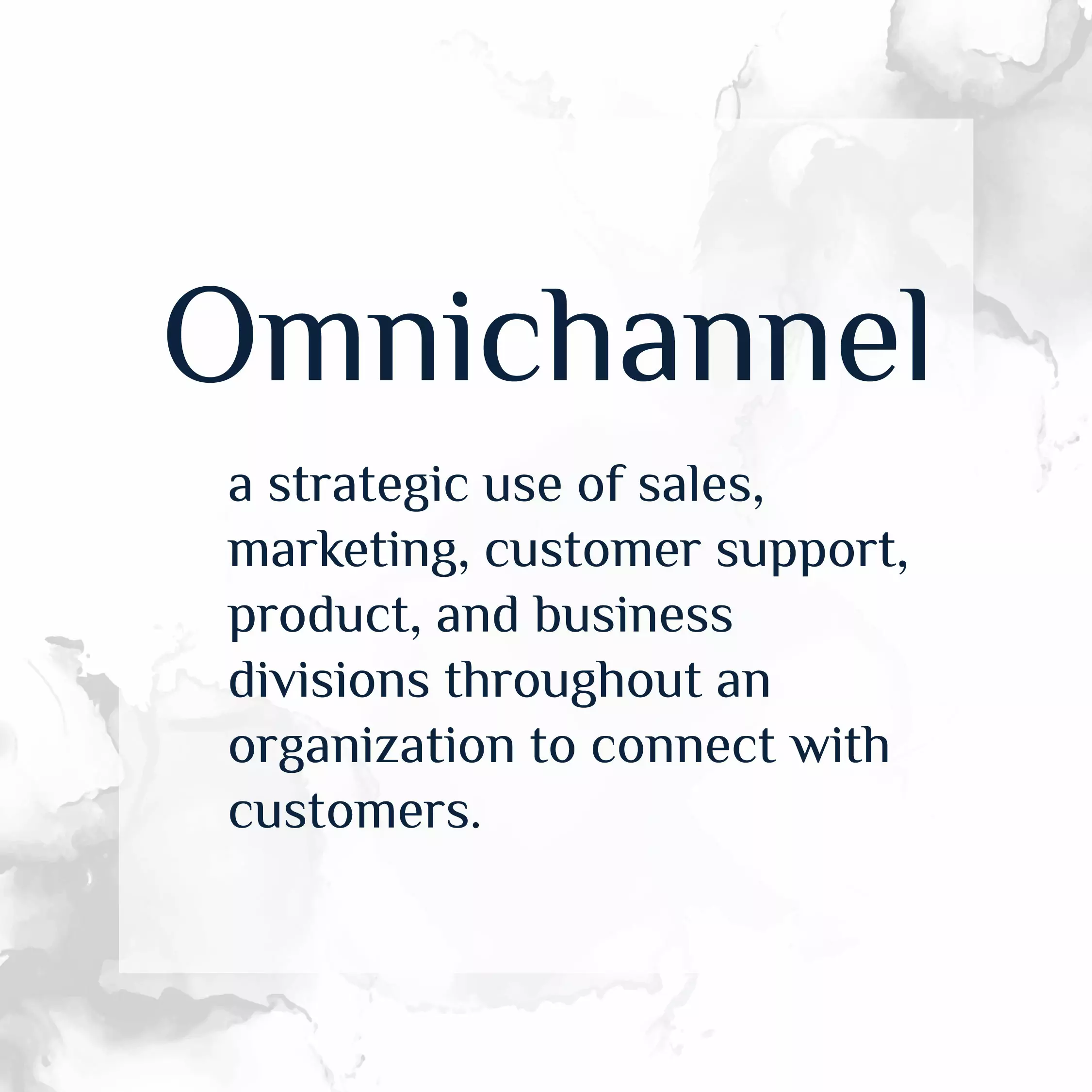Insights
Published: 5.4.23
This article is the first in a series of articles on omnichannel strategies and digital marketing.
Five years ago, the average B2B decision-maker interacted with five channels before engaging with an organization. According to McKinsey, that number had doubled as of 2021. From web searches and emails to phone calls and video conferences, decision-makers are spending more time getting a feel for potential partners and suppliers than ever before.
What Are Omnichannel Strategies?
Media consumption today is at an all-time high, meaning clients and prospects are engaging with brands in more and more ways every day. This gives organizations the unique opportunity to leverage both traditional and digital channels for better outcomes, from qualifying prospects to improving profit margins and customer satisfaction. This approach, or strategy, is called “omnichannel.”
When we say omnichannel, we’re referring to a strategic use of sales, marketing, customer support, product, and business divisions throughout an organization to connect with customers. We mean utilizing a combination of brick and mortar, hybrid, and fully remote channels to stay ever-present for customers. Much like its name implies, omnichannel strategies take an everywhere, all-the-time approach.
“During the pandemic, buyers were stuck in their homes — and on their phones,” said Br8kthru CEO Jon Lenz. “This gave digital the tremendous opportunity to grow exponentially and take the lead in innovative marketing strategies. Even though life has more or less returned to normal, buyers aren’t willing to give up the change and convenience they found during the pandemic. Omnichannel is a solution that lets them have it all, while improving outcomes for businesses.”
As marketers, we can feel that we’re stretched thin, or we’re overwhelmed by the channels we’re already on. However, the reality is omnichannel is what customers expect, and research shows the more channels an organization deploys, the greater their market share becomes in aggregate. By embracing omnichannel to reach prospects and clients, teams will be more successful over time.
How Customer Expectations Guide Omnichannel Experiences
Part of the success of omnichannel comes from meeting audience expectations. They want to be able to purchase on multiple channels. You provide that. If you’re using omnichannel to get in front of (and stay in front of) your audience, you need to consistently meet — and exceed — customer expectations. These expectations can be summarized as five customer imperatives:
-
Consistent Customer Experience Across Channels
-
Multi-Channel Purchasing Opportunities
-
Online Product Availability
-
Always-On, Real-Time Customer Service
-
Performance or Money-Back Guarantees
The ability to meet these customer imperatives, provide a smooth user experience, and meet customers where they are across channels is more important than ever before.
Adapting to an Omnichannel World
The foundation of omnichannel strategies is meeting — and exceeding — customer expectations. This is clear in direct to consumer (D2C) contexts first and foremost, but purchasing habits in D2C spaces ultimately influence buyers in other spaces, like business to business (B2B). The strategies and tactics that are successful in one instance will be applicable in other marketing, making omnichannel strategies important for all businesses.

Regardless of industry or market, we all know that expectations can change rapidly, depending on a variety of factors out of our control, like competitors, new and changing channels, and trends. In order to stay ahead of the ever-changing competitive landscape, create a strategy that is flexible.
The most effective marketing strategies have always been responsive to customer needs and expectations, and this will become even more pivotal as omnichannel strategies become more common. As a bonus, flexible marketing strategies will equip your teams to better adapt to other changes beyond customers, such as shifting trends in your industry and market changes. Adaptation will be key to standing out from the crowd.
In part 2 of this series about omnichannel strategies, we’ll provide a framework for how to put together an omnichannel strategy that aligns with your company’s sales processes and marketing tactics. In part 3, we explore how digital automation can support sales enablement.
Not Sure Where to Start? We Can Help
Knowing more about omnichannel strategies is the first step in beginning to execute against them. Digital marketing is a great place to start or expand your omnichannel strategy and can include your website, social media, email, ads, and more as channels for effective marketing efforts.
If your goal is to promote a new product or service, considering both traditional sales tactics and digital channels will create an omnichannel strategy that leads to more revenue and customer satisfaction. In part two of this article series, we’ll be sharing more tactical examples of how you can use digital marketing to your advantage.
At Br8kthru, we collaborate with clients to leverage current best practices and the newest tactics to solve complex business challenges and unlock growth. With expertise across the digital landscape, we’re uniquely positioned to help you and your team embark on or improve your omnichannel experiences. An easy way to evaluate your current digital approach is to request a Digital Marketing Gap Audit and our subject matter experts (SMEs) will analyze your existing activities and identify opportunities for improvement.